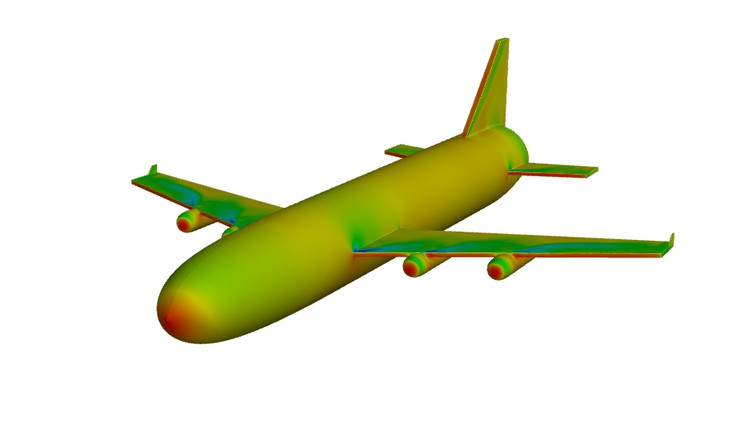
A first course in learning everything in CFD from scratch without any prior knowledge of simulation
What you’ll learn
-
Learn CFD simulation from scratch in ANSYS workbench environment
-
Clean geometry and create domain in ANSYS Spacelcaim
-
Create highly quality mesh in Workbench meshing
-
Quickly run CFD simulation in Fluent for full aircraft
-
To setup compressible flow problem and accelerating solution convergence for density based solver in Fluent
-
Quickly modify geometry of full Aircraft by providing 8 deg AoA using move command
-
Updating mesh and solution in single click
-
Analyze CFD results in Fluent post processing tools and getting contour plot, vector plots, path lines, Cp plot etc.
Requirements
-
You will learn every thing from scratch. So no prior knowledge of CFD is needed for this course.
-
ANSYS 2022 R1 (professional) installed on your computer for using files given with course.
-
You would also need a decent computer with i5 or i7 processor and atleast 8-16 GB RAM
Description
In this course you will learn your first CFD simulation from scratch. We will use Boeing 747-400 simplified model to learn important CFD modules in ANSYS workbench.
We will use ANSYS Spaceclaim for geometry cleaning and creating domain for full Aircraft (Boeing 747-400). We will also crate body that will be used as body of influence (BOI) for mesh refinement in wake region.
After that using same geometry and domain, we will cerate hybrid mesh in Workbench Grid generation app. We will create prism layers for capturing boundary layer flow features which are very important for aerodynamic flows such in our case. We will also refine mesh in wake using body of influence (BOI).
This mesh will be then used for setting up compressible flow simulation in ANSYS Fluent. You will provide proper scaling factor, choosing appropriate turbulence model, enabling energy equation, using ideal gas las for density, defining boundary conditions specially at inlet in terms of Mach number, defining reference condition including reference area and reference length. You will also setup defining report definitions for monitoring drag and lift coefficients. Solution will be initialized using hybrid method. We will also setup solver so that we can accelerate solution convergence using “solution steering” option in Fluent. Finally we will hit the calculate option to solve CFD simulation using iterative solver schemes available in ANSYS Fluent.
Once solution is converged based on plots of Cd and CL then we will analyze the flow field including Cp plot, vectors plots, contours plots for pressure and Mach number. We will also draw path lines to see how flow is interacting with Aircraft body. Finally we will find out drag and lift coefficients.
Once more interesting part of this course is that, you will also modify the geometry of whole aircraft by providing angle of attack of 8 deg to full model. You will quickly update the mesh using settings for the pervious case with zero angle of attack (AoA), and run simulation in Fluent. We will again solve the problem in Fluent and discuss the differences in results as comparison to case with zero AoA.
Who this course is for:
- Course is intended to students who are just starting to learn their first CFD simulation.